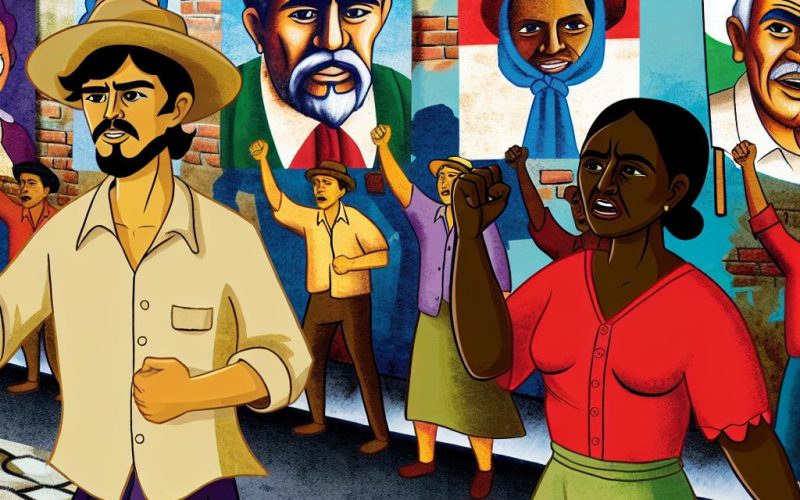The Sandinista Revolution: An Overview
The Sandinista Revolution, often referred to as the Nicaraguan Revolution, was a significant socio-political movement that took place in Nicaragua during the late 20th century. This period was marked by profound changes and upheavals, drawing worldwide attention.
Historical Context
The revolution is rooted in decades of political instability and social injustice in Nicaragua. Prior to the revolution, the country experienced prolonged periods of dictatorial rule under the Somoza family, which had a hold on the political and economic structures of Nicaragua from the 1930s to the 1970s. This era was characterized by extensive corruption, human rights abuses, and rampant inequality.
The Rise of the Sandinista National Liberation Front (FSLN)
In response to the oppressive regime, the Sandinista National Liberation Front (FSLN) was established in 1961. This group was named after Augusto César Sandino, a revolutionary leader who fought against U.S. intervention in the 1920s and 30s. The FSLN, with its roots in Marxist ideology, gained support among the Nicaraguan populace, advocating for agrarian reform, social justice, and the overthrow of the Somoza dictatorship.
The Overthrow of the Somoza Regime
By the late 1970s, the FSLN had amassed enough support to pose a serious threat to the Somoza government. The turning point came in July 1979, when the Somoza regime was overthrown after a protracted armed struggle, leading to the establishment of a revolutionary government under the FSLN’s leadership. This marked a significant shift in Nicaraguan politics and initiated a period of reform endeavors.
Reforms and Challenges
Following the revolution, the FSLN implemented a series of reforms designed to address the deep-seated issues within Nicaraguan society. These reforms focused on redistribution of land, improving education and health services, and economic diversification. However, these efforts faced numerous challenges, including economic hardships, internal political dissension, and external pressure, most notably from the United States, which opposed the Sandinista’s alignment with Soviet and Cuban interests.
The Contra War
The Sandinista government was embroiled in a prolonged conflict with the Contras, an armed opposition group funded in part by the U.S. government. This counter-revolutionary war wreaked havoc on the country’s economy and infrastructure, creating a challenging environment for the newly established government to implement its reform agenda.
Impact on Nicaraguan Society
The Sandinista Revolution brought about a notable transformation in Nicaraguan society. While the new government faced numerous obstacles, the socio-political landscape of the country underwent significant changes. The FSLN’s emphasis on land reform aimed to reduce the profound economic disparity by redistributing land from the wealthy elite to the landless peasants and small farmers. This initiative was an effort to address the inequities that had been entrenched by decades of Somoza rule.
Education and Health Reforms
The revolution also prioritized education and health care, which were critical components in the Sandinista government’s agenda. Substantial investments were made to improve literacy rates and access to education, particularly for the rural population. Health care services were expanded to reach underserved areas, contributing to improved overall public health outcomes. These steps were indicative of the government’s commitment to social equity and development.
Economic Policies and Challenges
While the intention behind the economic policies was to create a more equitable society, implementing these changes proved to be a daunting task. The Nicaraguan economy had long been dependent on a few key agricultural exports, and diversifying this economy was challenging amidst external economic pressure and ongoing conflicts. In addition, the trade embargo and financial restrictions imposed by the U.S. government compounded economic difficulties, further straining the new administration’s capacities to effectuate broad economic reforms.
International Dynamics
The international dimension of the Sandinista Revolution was complex and multifaceted. On the one hand, the Sandinista government received support from Soviet-aligned countries and Cuba, bolstering its international standing among socialist and communist states. On the other hand, this association led to antagonistic relations with the U.S., which feared the spread of communism in the Western Hemisphere and sought to contain it by supporting the Contras. This geopolitical backdrop influenced both internal policies and Nicaragua’s foreign relations.
Continued Socio-political Influence
Though the revolution occurred decades ago, its influence continues to resonate in Nicaragua and beyond. The revolutionary government’s efforts to reform the socio-political fabric of the country laid the groundwork for ongoing political discourse and engagement in Nicaragua. Furthermore, the Sandinista Revolution served as an inspiration for other liberation movements in Latin America, highlighting the shared struggles against autocratic rule and socio-economic injustices.
The complexities inherent in the Sandinista Revolution reflect not only the challenges faced during this pivotal period in Nicaragua’s history but also the resilience and aspirations of its people to cultivate a more just and equitable society. This transformative period remains a reference point for understanding the socio-political evolution of both Nicaragua and the broader Latin American region, serving as a testament to the enduring legacy of revolutionary movements in shaping national and regional identities.
For those interested in exploring further into the socio-political dynamics in Nicaragua, you can visit this site.
